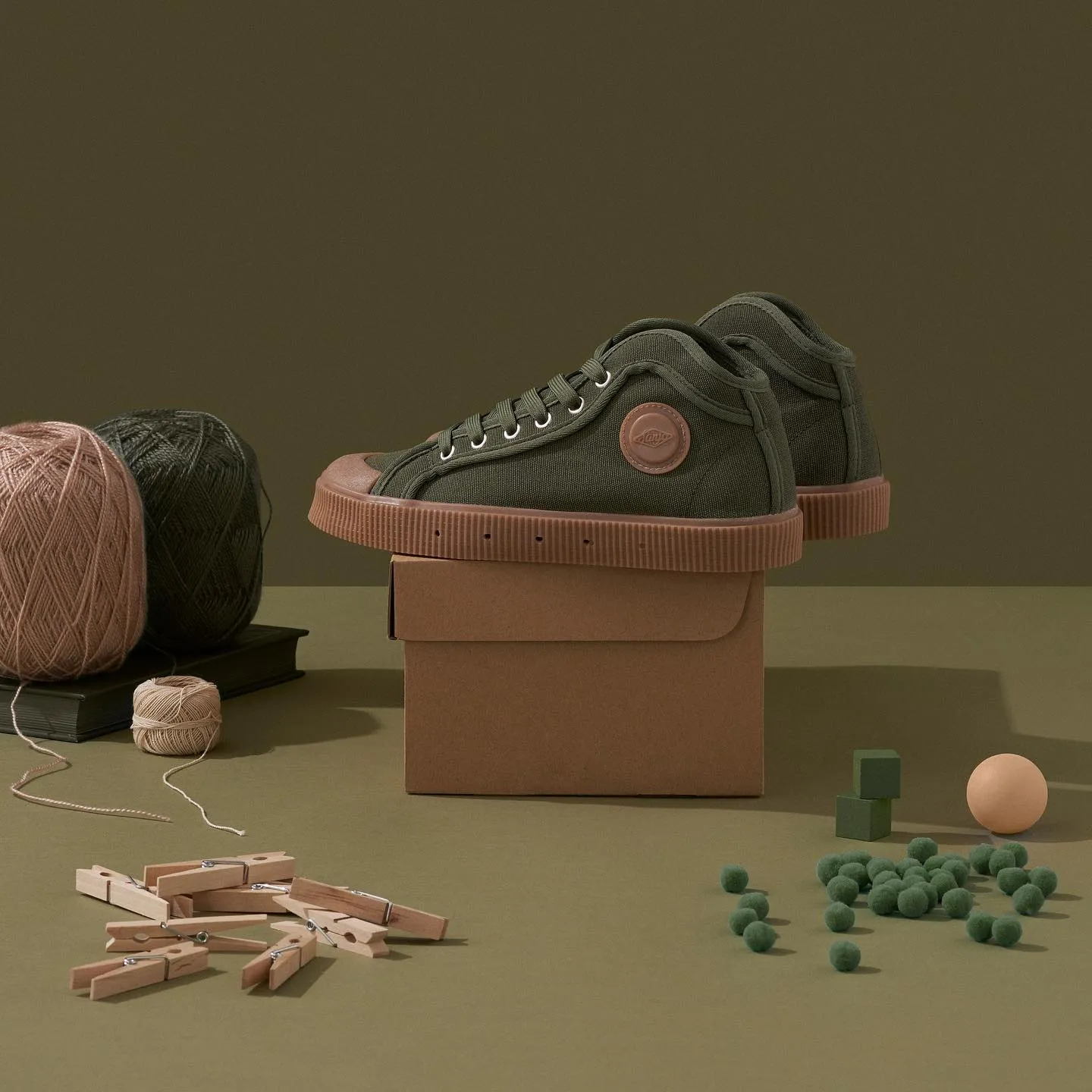Reimagining a national classic, Sanjo weaves 90 years of heritage into a design-forward future — grounding Portuguese identity in every step.
There’s something quietly compelling about Sanjo. At first glance, a pair of its canvas sneakers evokes a sense of ease — casual, unpretentious, grounded. But beneath the surface lies a deep current of history and intention. Worn by generations, forgotten, then found again, Sanjo is not a brand chasing trends. It is a cultural artefact, reimagined with care. A Portuguese classic, restored not for nostalgia’s sake, but as an invitation: to move differently, to live with more awareness, and to honour what endures.
Sanjo was born in 1933 in São João da Madeira, a town synonymous with Portuguese industry and craft. At a moment when global fashion was shifting, the Companhia Industrial de Chapelaria — once a prominent hat manufacturer — turned its expertise to shoes. The result was Sanjo: Portugal’s first sneaker brand. With its rubber soles and simple lines, it became ubiquitous — worn by students, athletes, and workers alike. It wasn’t about fashion. It was about presence. For over half a century, Sanjo was the sneaker of everyday Portugal.
That presence faded in the late 1990s, as globalisation reshaped manufacturing and consumption. The factory closed. But the memory of Sanjo never quite disappeared. In 2019, entrepreneurs José Egipto Magalhães and Hélder Pinto undertook its revival — not as a brand to be recreated, but as a story to be recovered.



The Sanjo of today stands on foundations of research, restoration, and reverence. With no original moulds or archives intact, the team traced the brand’s lineage through forgotten factories, personal collections, and oral histories. What emerged was not just a product, but a philosophy. Now produced in Felgueiras using local materials and skilled hands, Sanjo reclaims its identity through responsible making.
While once reliant on vulcanisation, the brand has moved toward more eco-conscious techniques — gluing soles to reduce emissions and energy use. Materials are selected with care: natural rubber, organic cotton, bombazine, and even traditional burel wool. The result is a sneaker that resists the noise of the moment. Minimal branding. Muted tones. A shape that belongs to no single decade — and so belongs to all of them.
At the heart of Sanjo’s offering are two enduring models: the K100 and K200. The K100, originally worn in schools and gymnasiums, returns with its signature canvas upper and simplified sole — a design that feels both rooted and relevant. The K200 adds subtle structure, inviting a slightly more formal silhouette without sacrificing ease. Both models are an exercise in quiet confidence: functional, refined, and made to age with grace.
But brand’s vision doesn’t stop at sneakers. Collaborations with the skateboarding community have led to new movement-ready designs. Projects with Burel Factory bring heritage wool into unexpected forms. A limited apparel line and a 90th anniversary fragrance gesture toward a larger, evolving universe — always Portuguese in soul, always human in scale.
In its revival, Sanjo offers more than shoes — it offers a different rhythm. One that moves slowly, purposefully, and with respect for where it has been. It doesn’t shout for attention; it simply walks with presence. In a landscape defined by speed and excess, Sanjo reclaims the value of continuity. It honours memory, not by replicating it, but by understanding it — and choosing, with care, how to carry it forward.
That is why Sanjo belongs on THE PORTUGUESE LIST. Not only as a brand of design excellence, but as a keeper of cultural time — reminding us that some of the most meaningful steps are the ones taken with intention.
